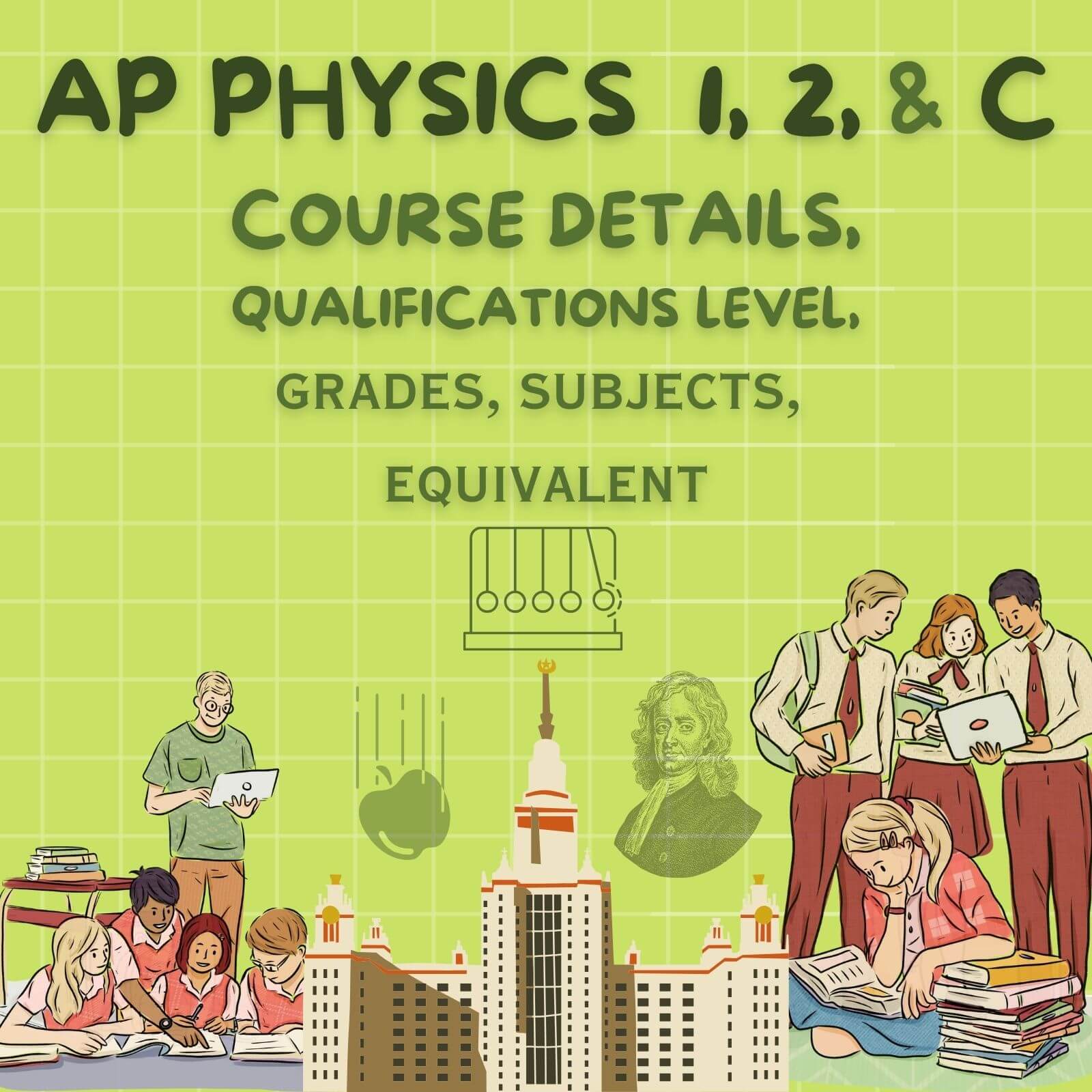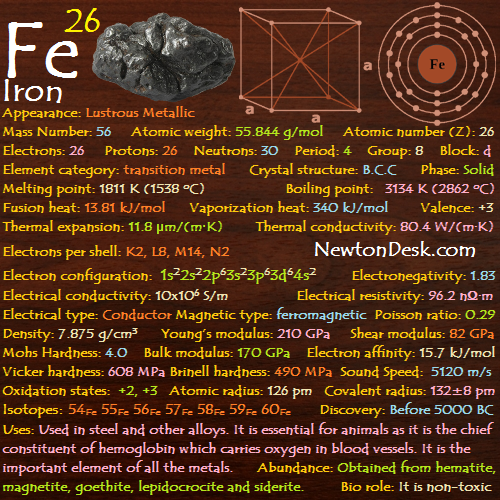Hey Studs, I know why you have come to this Article, Don’t worry. Hope you will seize a great understanding and clear your insights about the AP Physics course. In this article, you will get every detail of the AP Physics 1, 2 and C Exam. As you know, AP Physics stands for Advanced Placement in Physics subject, a qualification for students who are in class 10, or 11th, or 12 in the UK. It is a three-year course as the introductory college-level Physics course. Typically, the AP Physics course is tougher than other subjects. It is widely approved by various universities or institutions worldwide through Advanced Placement members.
What is the AP Physics exam?
AP Physics exam is an Advanced Placement exam in Physics subject. It includes the understanding of advanced concepts. College Board is a part of the Advanced Placement Program and administers all the physics courses..
CONTENT INDEX
AP Physics courses
There are 3 AP Physics courses-
- AP Physics 1
- AP Physics 2
- AP Physics C: Electricity and Magnetism
- AP Physics C: Mechanics
What is AP Physics 1?
- AP Physics is an introductory and algebra-based course.
- It is a first-year physics course at the college level.
The AP Physics 1 Exam pattern:
Section A: Multiple Choice Questions
- This section is half (50%) of exam scores.
- It has total 50 questions in two parts.
- The first part has 45 questions where you pick one answer (multiple-choice questions) which may be in discrete or sets. While, The second part has 5 questions where you can pick more than one answer (multiple-select multiple-choice options) which are all discrete.
- The duration of time is 1 hour 30 minutes.
Section B: Free Response Questions
- This section includes the other half (50%) of Your exam score, and it also takes 1 hour 30 minutes same as section A.
- It includes 5 free response questions-
- One question about Experimental Design (12 points).
- One question for Qualitative/Quantitative Translation (12 points)
- One Short Answer question about a Paragraph Argument (7 points).
- Two Short Answer questions (7 points each).
In simple terms, the AP Physics 1 Exam has two parts: one with multiple-choice questions, and the other with Free Response Questions or written answers. Both parts together make your final score.
| S.No. | UNITS | TOPICS | WEIGHTAGE IN EXAM |
| 1. | KINEMATICS | Positions, Velocity, And Acceleration | 12%-18% |
| Representations Of Motion | |||
| 2.
|
DYNAMICS | Systems | 16%-20%
|
| The Gravitational Field | |||
| Contact Forces | |||
| Newton’s First Law | |||
| Newton’s Third Law And Free-Body Diagrams | |||
| Newton’s Second Law | |||
| Applications Of Newton’s Second Law | |||
| 3. |
CIRCULAR MOTION AND GRAVITATION | Vector Fields | 6%-8% |
| Fundamental Forces | |||
| Gravitational And Electric Forces | |||
| Gravitational Field/ Acceleration Due To Gravity On Different Planets | |||
| Inertial Vs. Gravitational Mass | |||
| Centripetal Acceleration And Centripetal Force | |||
| Free-Body Diagrams For Objects In Uniform Circular Motion | |||
| Applications Of Circular Motion And Gravitation | |||
| 4. |
ENERGY | Open And Closed Systems: Energy | 20%-28% |
| Work And Mechanical Energy | |||
| Conservation Of Energy, The Work-Energy Principle, And Power | |||
| 5. |
MOMENTUM | Momentum And Impulse | 12%-18% |
| Representations Of Changes In Momentum | |||
| Open And Closed Systems: Momentum | |||
| Conservation Of Linear Momentum | |||
| 6. |
SIMPLE HARMONIC MOTION | Period Of Simple Harmonic Oscillators | 4%-6% |
| Energy Of A Simple Harmonic Oscillator | |||
| 7. |
TORQUE AND ROTATIONAL MOTION | Rotational Kinematics | 12%-18% |
| Torque And Angular Acceleration | |||
| Angular Momentum And Torque | |||
| Conservation Of Angular Momentum |
What is AP Physics 2?
So, what’s next after AP Physics 1? Let’s find out!
- AP Physics 2 is also an introductory and algebra-based physics course.
- It’s kind of like the second year in college.
- Moreover, it covers more advanced topics, skills, and knowledge than AP Physics 1 course.
The AP Physics 2 Exam pattern:
Section A: Multiple Choice Questions-
- This section has half 50% of exam scores.
- It has total 50 questions in two parts.
- The first part has 45 questions where you pick one answer (single-select multiple-choice questions) which may be in discrete or sets. While, The second part has 5 questions where you can pick more than one answer (multiple-select multiple-choice options) which are all discrete.
- The duration of time is 1 hour 30 minutes.
Section B: Free Response Questions-
- This section includes the other half (50%) of Your exam score, and it also takes 1 hour 30 minutes same as section A.
- It includes 4 free response questions-
- One question about Experimental Design (12 points).
- One question for Qualitative/Quantitative Translation (12 points).
- One Short Answer question about a Paragraph Argument (10 points).
- One more Short Answer question (10 points).
In simple terms, the AP Physics 2 Exam is made up of two parts: one with multiple-choice questions and the other with written answers. Both parts together give your final score
| S.No. | UNITS | TOPICS | WEIGHTAGE IN EXAM |
| 1) | FLUIDS | Fluid Systems | 10%-12% |
| Density | |||
| Fluids: Pressure And Forces | |||
| Fluids And Free-Body Diagrams | |||
| Buoyancy | |||
| Conservation Of Energy In Fluid Flow | |||
| Conservation Of Mass Flow Rate In Fluids | |||
| 2) |
THERMODYNAMICS | Thermodynamic Systems | 12%-18% |
| Pressure, Thermal Equilibrium, And The Ideal Gas Law | |||
| Thermodynamics And Forces | |||
| Thermodynamics And Free-Body Diagrams | |||
| Thermodynamics And Contact Forces | |||
| Heat And Energy Transfer | |||
| Internal Energy And Energy Transfer | |||
| Thermodynamics And Elastic Collisions: Conservation Of Momentum | |||
| Thermodynamics And Inelastic Collisions: Conservation Of Momentum | |||
| Thermal Conductivity | |||
| Probability, Thermal Equilibrium, And Entropy | |||
| 3) |
ELECTRIC FORCE, FIELD, AND POTENTIAL | Electric Systems | 18%-22% |
| Electric Charge | |||
| Conservation Of Electric Charge | |||
| Charge Distribution- Friction, Conduction, And Induction | |||
| Electric Permittivity | |||
| Introduction To Electric Forces | |||
| Electric Forces And Free-Body Diagrams | |||
| Describing Electric Force | |||
| Gravitational And Electromagnetic Forces | |||
| Vector And Scalar Fields | |||
| Electric Charges And Fields | |||
| Isolines And Electric Fields | |||
| Conservation Of Electric Energy | |||
| 4) |
ELECTRIC CIRCUITS | Definition And Conservation Of Electric Charge | 10%-14% |
| Resistivity And Resistance | |||
| Resistance And Capacitance | |||
| Kirchoff’s Loop Rule | |||
| Kirchoff’s Junction Rule And The Conservation Of Electric Charge | |||
| 5) |
MAGNETISM AND ELECTROMAGNETIC INDUCTION | Magnetic Systems | 10%-12% |
| Magnetic Permeability And Magnetic Dipole Moment | |||
| Vector And Scalar Fields | |||
| Monopole And Dipole Fields | |||
| Magnetic Fields And Forces | |||
| Magnetic Forces | |||
| Forces Review | |||
| Magnetic Flux | |||
| 6) |
GEOMETRIC AND PHYSICAL OPTICS | Waves | 12%-14% |
| Electromagnetic Waves | |||
| Periodic Waves | |||
| Refraction, Reflection, And Absorption | |||
| Images From Lenses And Mirrors | |||
| Interference And Diffraction | |||
| 7) |
QUANTUM, ATOMIC, AND NUCLEAR PHYSICS | Systems And Fundamental Forces | 10%-12% |
| Radioactive Decay | |||
| Energy In Modern Physics | |||
| Mass-Energy Equivalence | |||
| Properties Of Waves And Particles | |||
| Photoelectric Effect | |||
| Wave Functions And Probability |
What is AP Physics C: Mechanics?
- Advanced Placement (AP) Physics C: Mechanics is also known as AP Mechanics.
- It’s a one-semester course like in college having calculus-based physics.
- It is a college-based physics course, especially for those students who want to specialize in physical sciences or engineering.
The AP Physics C: Mechanics Exam pattern:
Section A: Multiple Choice Questions-
- This section is half 50% of your exam scores.
- There are 35 questions, and they can be either different types of questions or groups of questions that use a specific set of data and have a series of related questions.
- The duration of time is 45 minutes.
Section B: Free Response Questions-
- This section includes the other half 50% of your exam score.
- It includes 3 free-response questions on the basis of experimental or lab-based components.
- The duration of time is 45 minutes.
- Moreover, the assessment of the science practices includes visual representations, questions and methods, representing data and phenomena, data analysis, theoretical relationships, mathematical routines, and argumentation, which are to be done through these questions.
In simple words, the AP Physics C: Mechanics Exam has two parts: one with different kinds of questions, and the other with questions about experiments. Together, they make up your final score.
| S.No. | UNITS | TOPICS | WEIGHTAGE IN EXAM |
| 1. |
KINEMATICS | Kinematics: Motion In One Dimension | 14%-20% |
| Kinematics: Motion In Two Dimensions | |||
| 2. |
NEWTON’S LAW OF MOTION | Newton’s Laws Of Motion: First And Second Law | 17%-23% |
| Circular Motion | |||
| Newton’s Laws Of Motion: Third Law | |||
| 3. |
WORK, ENERGY, AND POWER | Work-Energy Theorem | 14%-17% |
| Force And Potential Energy | |||
| Conservation Of Energy | |||
| Power | |||
| 4. |
SYSTEMS OF PARTICLES AND LINEAR MOMENTUM | Center Of Mass | 14%-17% |
| Impulse And Momentum | |||
| Conservation Of Linear Momentum, Collisions | |||
| 5. |
ROTATION | Torque And Rotational Statics | 14%-20% |
| Rotational Kinematics | |||
| Rotational Dynamics And Energy | |||
| Angular Momentum And Its Conservation | |||
| 6. | OSCILLATIONS | Simple Harmonic Motion, Springs, And Pendulums | 6%-14% |
| 7. |
GRAVITATION | Gravitational Forces | 6%-14% |
| Orbits Of Planets And Satellites |
What is AP Physics C: Electricity and Magnetism?
- It is a one-semester course having calculus-based physics.
Section A: Multiple Choice Questions
- This section has half (50%) of exam scores.
- It includes 35 questions.
- The duration of time is 45 minutes.
Section B: Free Response Questions
- This section includes the other half 50% exam score.
- It includes 3 free-response questions on the basis of experimental or lab-based components.
- The duration of time is 45 minutes.
| S.No. | UNITS | TOPICS | WEIGHTAGE IN EXAM |
| 1. |
ELECTROSTATICS | Electrostatics: Charge And Coulomb’s Law | 26%-34% |
| Electrostatics: Electric Field And Electric Potential | |||
| Electrostatics: Electric Potential Due To Point Charges And Uniform Fields | |||
| Electrostatics: Gauss’s Law | |||
| Electrostatics: Fields And Potentials Of Other Charge Distributions | |||
| 2. |
CONDUCORS, CAPACITORS, DIELECTRICS | Conductors, Capacitors, Dielectrics: Electrostatics With Conductors | 14%-17% |
| Conductors, Capacitors, Dielectrics: Capacitors | |||
| Conductors, Capacitors, Dielectrics: Dielectrics | |||
| 3. |
ELECTRIC CIRCUITS | Electric Circuits: Current And Resistance | 17%-23% |
| Electric Circuits: Current, Resistance, And Power | |||
| Electric Currents: Steady-State Direct-Current Circuits With Batteries And Resistors Only | |||
| Electrostatics: Gauss’s Law | |||
| 4. |
MAGNETIC FIELDS | Magnetic Fields: Forces On Moving Charges In Magnetic Fields | 17%-23% |
| Magnetic Fields: Forces On Current Carrying Wires In Magnetic Fields | |||
| Magnetic Fields: Fields Of Long Current Carrying Wires | |||
| Magnetic Fields: Biot-Savart Law And Ampere’s Law | |||
| 5. |
ELECTROMAGNETISM | Electromagnetism: Electromagnetic Induction | 14%-20% |
| Electromagnetism: Inductance | |||
| Electromagnetism: Maxwell’s Equations |
AP Physics vs. Regular Physics
- Level of inclemency (Difficulty Level) – AP Physics is equivalent to a college-level introductory physics course, and it covers topics at a deeper level as compared to regular high school physics course.
- Content Coverage (Topics) – AP Physics covers a broader range of topics and explores advanced concepts, while regular physics focuses on the basics, which covers the fundamental concepts.
- Involvement of Mathematics- AP Physics involves more advanced math concepts, like calculus and algebra-based. On the other hand, regular physics courses focus more on understanding concepts than complex math.
- Preparation for College- AP Physics exam helps you to earn your college credit and prepare for college-level physics courses by performing well. Whereas, regular physics courses carry less weight for college admission or credit.
- Workload- The workload in AP Physics is high as it includes advanced concepts that may be challenging or includes assessment than regular physics courses.
- Classroom Environment- AP Physics students attend different classes in various rooms and use multiple labs for performing experiments. But Regular physics students typically have common classroom and a shared lab..
How to prepare for the AP Physics exam
- Understand your exam course and its description very well.
- Make a good study time-table. For this You can go through this “How to make Best Study Time-table“.
- Review your textbooks and short notes like formula sheet. For this You can go through this “Best Physics Formula Sheet“
- Practice with free exams or mock tests related to your topics..
Some Doubtful Questions
How to get into AP classes in high school?
To enroll in AP classes in high school, start by reaching out to your school’s AP Coordinator. In India, authorized AP test scores or AP-authorized schools handle AP Exam registration.
How do AP grades work?
In AP Physics exams, you receive grades of 3, 4, or 5. A score of 3 means you passed the exam. Scores of 4 or 5 are excellent. Many countries, including the U.K., Canada, and Australia, accept AP credits or scores for admissions, placement, and scholarships.
Do you need calculus for AP Physics?
Yes, in AP Physics 1 and AP Physics 2, calculus is part of the curriculum.
What math do you need for AP Physics?
AP Physics courses include algebra-based, trigonometry, and calculus in the curriculum. Moreover, The AP Physics exam also involves advanced mathematics..
What do I need for AP Physics? “Requirements”
High school Students in grades 10th, 11th, or 12th can take the AP exam. For more details, refer to the information above.
Do you need AP Physics for engineering?
Yes, AP Physics C is valuable for engineering majors in college. It can help you earn credits and get benefits.
Do you need AP Physics for architecture?
Yes, AP Physics C is beneficial for physical sciences majors in college. Also, it is good to earn credits and get benefits.
Do you need AP Physics for college?
AP Physics is an Advanced Placement exam that explores advanced concepts. It’s beneficial to you if you’re interested in physics, becoming a physicist, or pursuing research. Plus, it can help you earn college credits
Can you take AP Physics without taking physics?
AP Physics includes advanced concepts. So, first, it’s important to know the fundamental concepts as well as logical concepts before diving in.
Who should take AP Physics?
AP Physics delves into advanced concepts. So, If you’re passionate about physics and want to do great work in Physics can definitely complete AP Physics exams.
GCE O-Level A-Level Exam Guide – Equivalent, Grades & Subjects
Hope, we’ve covered All your queries above about AP Physics 1, 2, and C exam
Riya utwal



